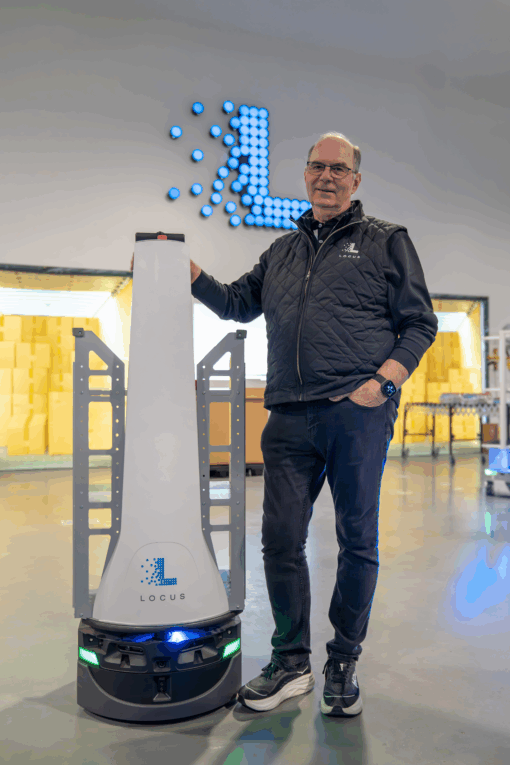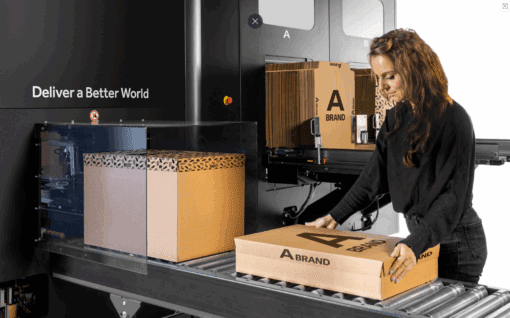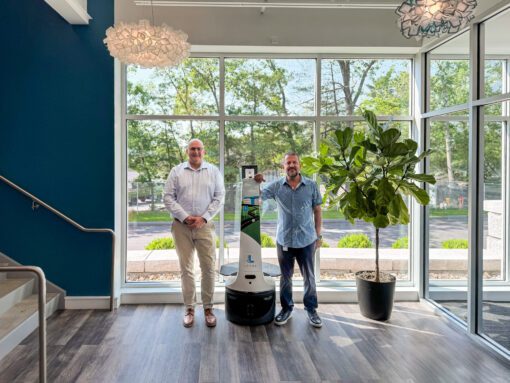WP: How to achieve 400 UPH with Locus Fast Pick
WP: How to achieve 400 UPH with Locus Fast Pick Download Now!
Technological innovation vital to overcome the productivity challenge
Denis Niezgoda, Vice President, EMEA & APAC
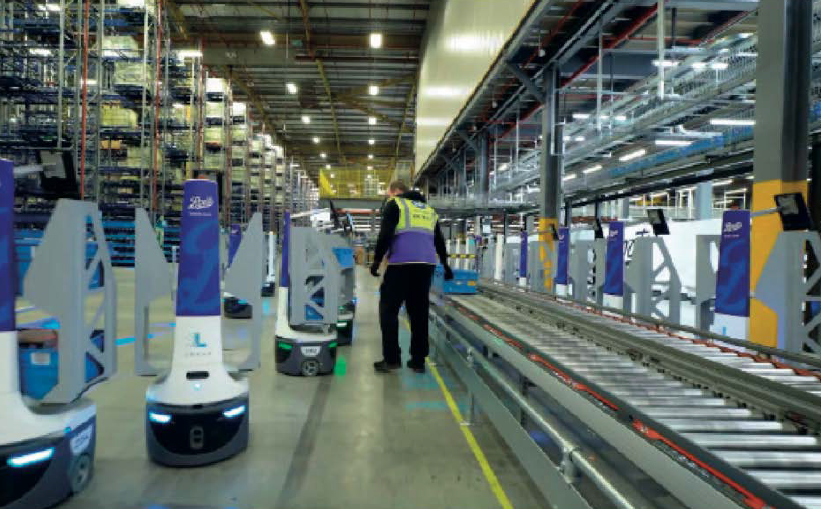
The need to stay flexible in the face of rapid change was dictating the future of supply chain management even prior to the COVID-19 pandemic. In the ecommerce sector, customers were used to receiving their online orders overnight – if not on the same day. Failure to fulfil these expectations saw many a disgruntled customer turn to the power of social media as a means of venting their fury, much to the chagrin of the suppliers concerned.
Originally published in Manufacturing & Logistics IT - March 2021 fast cash loans online
With levels of customer expectation intensifying during lockdown, where people became reliant on delivery networks to provide even essential goods, supply models were stress tested to the limit – many beyond breaking point.
It was soon apparent that traditional methods of order fulfilment were no longer be effective, especially in warehouses where depleted and socially distanced workforces were struggling to keep pace with rapidly expanding order volumes.
Starved of the traditional means of resolving peak order fulfilment by drafting in huge armies of temporary workers, retailers in particular were forced to consider alternate methods of supply. Those with the foresight to be early adopters of disruptive technologies were the ones best placed to succeed. They had long recognised that automation was likely to offer the best long-term solution for processing increasing online order volumes.
An indication of the rapid changes to supply encountered during 2020, is that the surge in demand within the ecommerce sector concentrated the equivalent of five years of expansion into the space of just six months. The Office for National Statistics (ONS) said that in January 2020, ecommerce accounted for 19% of all retail sales in the UK; by June this had reached 31%. Previous ONS estimates had suggested the UK would reach 25% by the end of 2023.
Additionally, the ONS said that online penetration for food retailers remained above 10% - almost double pre-pandemic levels. Faced with such a massive spike in demand, all UK supermarkets have had to look at improving their online channels and because of this, their supply chains.
But it is not just the food and beverage sector that has been tested, virtually any industry that relies on the movement of goods has had to review operations. Retailers especially are undergoing significant change as many shift their business models to become omnichannel operations.
Improving productivity
In doing so, savvy operators are looking at how technology can best be implemented to improve their productivity. This is because traditional methods for dealing with periods of high demand are no longer viable.
Prior to the pandemic, the growth pattern within the ecommerce sector was relatively predictable, meaning businesses could plan for the changes in plenty of time to make sure their operations were robust enough to cope.
However, taking on thousands of temporary employees is no longer the answer. With the growth in logistics operations globally, the demand for extra manpower has increased and as with any finite commodity in high demand, so costs have begun to escalate. With minimum wage rates also escalating, pressure is mounting on multi-channel retailers to curb costs. Therefore, more cost-effective solutions to supply challenges are having to be implemented.
The pandemic also focussed attention on some of the social aspects of the supply process. Having thousands of extra workers crowded into busy aisles on the warehouse floor was just impractical given social distancing requirements.
Factor in fewer workers having to haul over-burdened carts in an effort to meet extra demand then it is unsurprising that productivity began to stall, while accident rates increased as teams struggled to meet cycle times.
The requirement for fewer workers on the warehouse floor but with the need to maintain peak levels of productivity and maintain customer delivery expectations, was an unwelcome scenario for retailers.
Therefore, making the workers that are available far more productive became the desired goal.
Collaborative operation
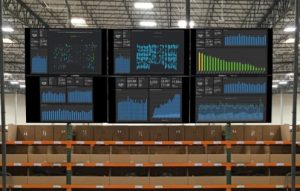 Locus Robotics’ revolutionary, multi-bot solution incorporates powerful and intelligent autonomous mobile robots that operate collaboratively with human workers to dramatically improve piece-handling productivity. It is easily capable of doubling, even trebling existing productivity levels without doubling the size of a workforce.
Locus Robotics’ revolutionary, multi-bot solution incorporates powerful and intelligent autonomous mobile robots that operate collaboratively with human workers to dramatically improve piece-handling productivity. It is easily capable of doubling, even trebling existing productivity levels without doubling the size of a workforce.
The innovative solution is increasingly being adopted by retailers, third-party logistics (3PLs) operators and specialty warehouses looking to overcome fulfilment challenges.
Such is the level of confidence in the Locus solution that US investors have agreed a $150m funding injection into the business to accelerate product innovation and support its global expansion. The funding values the business at $1bn.
So effective is the Locus AMR solution that it was named the winner of the 2020 Supply Chain Excellence Award for “Best Use of Robotics” for its work in collaboration with retailer Boots UK. Award judges praised the seamless implementation of the Locus solution and applauded the solution for its improvement in throughput capacity.
“Effective picking solutions such as the Autonomous Mobile Robot (AMR) system offered by Locus Robotics has helped businesses in the sector double their productivity without doubling their workforce,” said Denis Niezgoda, Vice President – Europe, Locus Robotics.
“Taking away the need for workers to haul heavy carts around the warehouse and have them located instead, close to their picking area, instantly cuts out hours of unproductive walking time on their part as the cobots convey picked items to the packing areas.”
The data fed into the LocusBot programme will also upgrade efficiency by improving pick accuracy and minimising costly and time-consuming errors.
But it is the scalability of the LocusBot solution that reaps big rewards for operators as the size of the robot fleet can be rapidly scaled up or down depending on demand, and with the bots being available through a Robots as a Service (RaaS) model, it is a very cost-effective option to the productivity challenge.
“With picking operations having to rapidly adjust to fluctuating demand, the LocusBot system has been designed to be deployable within as little as four weeks and extra robots can be added to the fleet at any time, once the programme is integrated into the Warehouse Management System. The extra robots can also be fully operational within a matter of minutes, rather than the hours – or even days – it could take to train up a human worker,” added Mr Niezgoda.
“The need to socially distance offers no challenge to the LocusBot and contact with existing workers is minimal. Likely as not, the only physical contact a worker will make with the robot during their shift is via the touch screen, which displays the order and product they need to pick. The robots will also be sanitised on a regular basis throughout any shift, so they are constantly safe.”
Matching customer delivery expectations with growing order volumes
 Boots first adopted the Locus solution ahead of the 2019 peak. It was keen to find an effective solution to the problem of matching customer delivery expectations with growing order volumes.
Boots first adopted the Locus solution ahead of the 2019 peak. It was keen to find an effective solution to the problem of matching customer delivery expectations with growing order volumes.
It quickly saw productivity double and the lessons learned from early implementation proved invaluable in March 2020 as the UK entered its first national lockdown, when order volumes escalated beyond those seen during traditional peak periods.
“The effectiveness of the LocusBot solution saw it manage a 172.4% increase in online orders – easily outstripping that seen during the 2019 peak – whilst maintaining customer delivery expectations,” said Mr Niezgoda.
“Through the effective deployment of the LocusBot solution, the retailer freed itself from the yoke of traditional peak restraints despite totally unexpected – and unprecedented – demands imposed by lockdown.”
If change is to remain a constant for the modern warehouse, then flexible and easily deployed technology will prove invaluable to operators needing to overcome productivity challenges.
Everything works, right from the start
Locus Robotics has built a complete, end-to-end system that is designed specifically to meet your ecommerce fulfilment needs. We're continually working on new ways to advance robotics technology to maximise warehouse productivity.
About the Author
Denis is an accomplished leader with an impressive history of advancing critical innovative solutions including unmanned aerial vehicles, mobile robots and robot piece picking applications. From scouting, testing and deploying the latest technologies to strategizing and advising across different industries, Denis gained international experience in more than 30 countries. With his global mindset, Denis will continue to establish Locus in Europe, leading its operations and initiatives.



